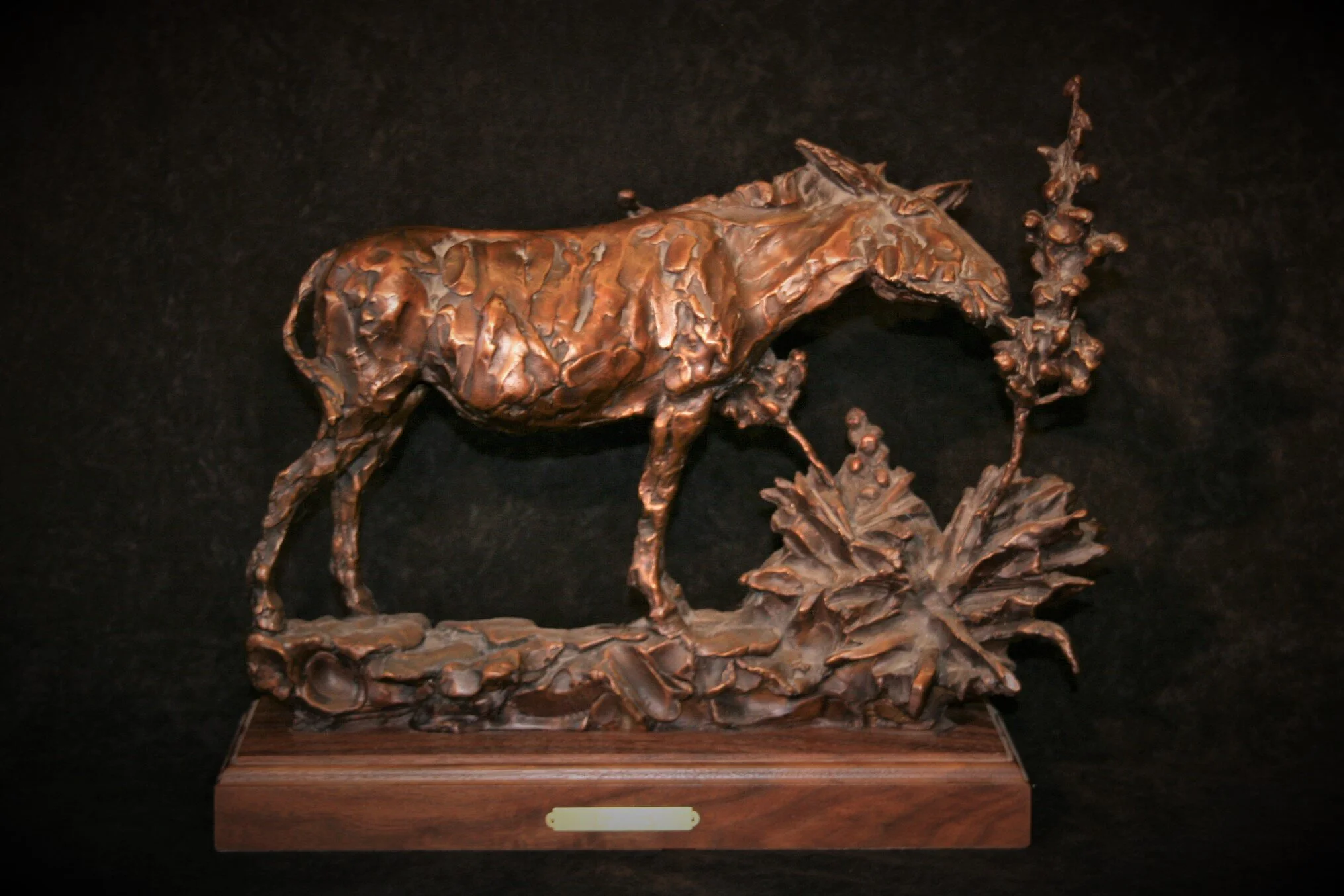Photo is of Original Clay
This girl is picking beautiful flowers and daydreaming, as children everywhere have always done. The difference is that these flowers also happen to be very important to her way of life, as American Indians have planted squash for thousands of years. It is the oldest of the “three sisters” plants (corn and beans being the other two), which are food staples and considered sacred.
Traditionally, infertile male blossoms are gathered in the morning before the flowers open, and eaten fresh, fried, added to soup or dried and saved for winter.
The girl is Cherokee, as evidenced by her headband, beaded medallion necklace, and basket. She is also, very appropriately, wearing a Pueblo squash blossom necklace. This item could have been gifted to her, traded for, or she could even be from the later post-reservation time period during which intertribal sharing is even more common.
After I had settled on the squash blossom for this sculpture, I was desperate to find actual squash blossoms to look at. Photos off the internet are great, but for a sculptor there is nothing better than studying the real thing up close and personal, in all it’s 3-D glory! It was summer at the time and though my wife had planted squash alongside her tomatoes earlier in the year, they had not survived a couple of severe late Spring thunderstorms…or so we thought! I was pondering my squash blossom dilema one morning, when my wife just happened to look out our back window and exclaim with joy that one of her squash plants was still alive! I rushed to see and low and behold, there was one scraggly yellow squash blossom timidly peeking out from between the towering tomato vines! My dilemma was solved!!! Over the next week and a half I would set the sculpture on an upside-down bucket next to the squash plant early in the morning and wait. I found out very quickly that our plant would only yield one blossom at a time, and that each blossom would only open up for about 2 or 3 hours for one morning and then slowly and tauntingly close back up, never to open again! As often as not, I would get everything ready only to find that the next bud was not going to open up that morning after all. Any curious chickens, cats, or dogs wandering around our backyard would hear curses coming from behind the tomato plants on those mornings! Suffice it to say that the girl in the sculpture must be benefitting from a much larger squash garden than I had!!
20h x 11w x 7d



















































































